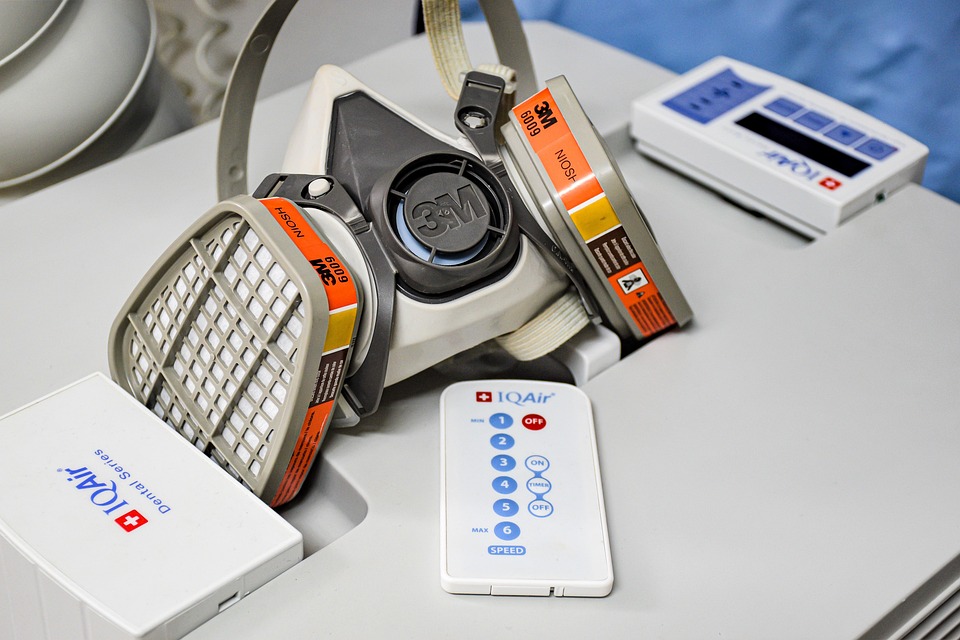
How to Keep an Eye on AI Agents Like a Pro: Simple Ways to Watch, Check, and Make Things Better
Are you wondering how to keep track of your AI agents and make sure they do their job right? Want easy tools to see if your digital helpers are working well, fast, and doing what you want? This article is for you! We’ll go through each step, from watching what your AI does to making sure problems get fixed quickly. You’ll learn why watching AI is important and get some tips you can use right away.
Table of Contents
- Why Should You Watch AI Agents?
- What Problems Happen If You Don’t Watch Your AI?
- How Do I Pick Goals and Things to Measure?
- What Does AI Work Look Like?
- How Do I Keep Track of Tasks and What’s Done?
- Why Does Computer Power Matter?
- What Tools Help Me Write Down and Follow Agent Work?
- What Are Some Good Monitoring Platforms?
- How Do Dashboards and Warnings Help You?
- What’s the Best Way to Stay on Top of Things?
- FAQs
- Key Things to Remember
Why Should You Watch AI Agents?
Let’s start with a story. Imagine you run a china dental lab. You use AI helpers to deal with patient files and keep everything moving. One day, something goes wrong and the computers slow down, but you don’t see it until customers start calling. Now you’ve got late orders, unhappy people, and confusion.
That is why you need to watch your AI agents! If you pay attention, you can spot problems early. You see when they’re slow, stuck, or confused. Best of all, you’ll know something is up before it gets really bad.
You wouldn’t drive a car without looking at the dashboard. So don’t run your business without looking at your AI!
What Problems Happen If You Don’t Watch Your AI?
If you don’t keep an eye on your AI, lots of things can go wrong. Here are some problems you might have:
- Missed Deadlines: Jobs take too long and no one knows. For example, if a file gets stuck, it may never reach the dental ceramics lab on time.
- Things Get Piled Up: If too many jobs wait and no one notices, the pace slows down for everyone.
- Staff Gets Confused: People don’t know if AI is busy, doing nothing, or broken, so they waste time checking or asking around.
- Lost Data: If there’s an error, it may sneak by until it’s too late.
- Bad Service: When agents don’t work, your customers notice first—not your team.
It’s like running a race with your eyes closed. Sure, you move, but you could fall!
How Do I Pick Goals and Things to Measure?
Before you start, you need to know what “doing well” means. Think about it: If you have an AI helper, what should it do in a day? Now, let’s make that easy to check.
Simple Things to Measure (KPIs):
| What to Measure | What It Shows | Why It’s Good |
|---|---|---|
| Agent Status | Is the AI working or waiting? | Shows busy or stuck |
| Task Progress | How far in a task is it? | Sees if things are moving |
| Resource Usage | How much computer power used? | Stops overloads |
| Mistake Rate | How much does it mess up? | Lets you fix problems fast |
| Finished Jobs | How many jobs done per hour/day | Shows how much is getting done |
Pick clear, easy goals. For example, “Each agent does five jobs an hour and keeps mistakes under 1%.” When I worked at a digital dental lab, easy goals like these kept us on track.
What Does AI Work Look Like?
Think of your AI helper like a smart assistant. Sometimes it’s waiting for the next job. Sometimes it’s working hard. Sometimes it gets stuck.
Usual AI Agent Ways:
- Idle: Not doing anything, waiting.
- Processing: Working on a job right now.
- Waiting: Paused (maybe needs more info).
- Error: Something went wrong.
- Offline: Not turned on.
When I started, I made a habit to check on my “assistant” every morning—just like asking, “Are you ready for work?”
If you don’t check these, an agent might be on “Error” or “Offline” and you won’t know. You wouldn’t ignore the check engine light in your car!
How Do I Keep Track of Tasks and What’s Done?
Your AI helpers do things like sorting files or scheduling jobs. But do you know which job is done? Which is running? Which failed?
Let’s say you send a model scan to the removable denture lab. If the AI stops in the middle, who will see it?
Task Types to Look For:
- Queued: Waiting to begin.
- Running: Being worked on now.
- Completed: Finished, all good.
- Failed: Didn’t work.
- Paused: Stopped for now.
- Retrying: Trying again after a problem.
Watching this is easy. You see what’s done and what needs your help. Once, our task list was backed up for hours. If we weren’t watching, we’d be in trouble!
Why Does Computer Power Matter?
Think about your computer. Sometimes the fan gets loud when something big is happening. That’s its way of saying, “I’m busy!”
AI agents use computer power to do their work. If they use too much, things get slow or crash. Too little, and maybe they are waiting too long.
Things to Check:
- CPU Use (%)
- Memory (GB or %)
- Disk I/O (are they reading or writing files?)
- Network I/O (sending or getting data)
- GPU (for big learning stuff)
When I set up an arch dental lab, we missed a slow-down from high CPU use. After watching it, we fixed things fast.
What Tools Help Me Write Down and Follow Agent Work?
Here’s a secret: AI doesn’t talk, but it leaves notes in logs! Think of a log as a diary where the AI writes what happened, step by step.
Good Logs Answer Questions Like:
- What did the agent do at 10 a.m.?
- Which task didn’t work, and why?
- How many things did it finish yesterday?
Table: Log Example
| Time | Status | Task | Message |
|---|---|---|---|
| 2023-10-27 10:30AM | INFO | R123 | Doing step 3 of 5 |
| 2023-10-27 10:32AM | ERROR | R123 | Waited too long for x-ray |
You can also use tracing tools. They show how a task goes through all steps, kind of like following steps in a path. If a job gets lost, you can find it!
Tip: Use error warnings. If too many jobs mess up, your system can tell you right away.
What Are Some Good Monitoring Platforms?
You don’t need to check each helper one by one. There are programs to collect all their info in one place.
- Prometheus + Grafana: Good for watching numbers and seeing trends.
- ELK Stack (Elasticsearch, Logstash, Kibana): Good for digging through logs.
- Datadog, New Relic: All-in-one, quick to start, have neat warnings.
And if you’re in the cloud, AWS CloudWatch or Google Stackdriver helps a lot.
A friend at an implant dental laboratory switched to dashboards and stopped stressing about missing big problems overnight. He saw everything in the morning!
How Do Dashboards and Warnings Help You?
Dashboards are like the control panels in an airplane. You can see everything at once: which agents are working, which jobs are waiting, and if any computer stuff is getting too hot.
Dashboards Can Show:
- How many agents are working or doing nothing.
- How many jobs are doing, done, or broke.
- Warnings for hot CPUs or slow jobs.
Warnings make things easier. Instead of staring all day, get emails or messages if something goes wrong:
- CPU stays above 80% for 10 minutes? Warning!
- Mistake rate goes up? Tell the team.
- Too many jobs stuck? Get help.
One time my dashboard showed red, and I fixed it before customers even saw anything was wrong.
What’s the Best Way to Stay on Top of Things?
The best teams use a command center. Think of it like a mission center for your AI.
With a web dashboard, you can:
- Pause, start, or restart helpers from anywhere.
- Stop, do again, or check any job.
- Change agent settings from one place.
No need to run to every computer or wait for tech help. You stay in charge.
Tip: Connect your dashboard to your update tool. You can put out new versions in minutes, not days.
FAQs
Q: Why does my AI agent stop sometimes?
A: It might be a computer problem (not enough memory), a mistake in the software, or a job that didn’t work. Good watching helps you see what happened fast.
Q: How often should I look at my dashboards?
A: At least once a day. If you’re busy or run a big lab, set up warnings so you hear about problems even when you’re away.
Q: Do I need to spend a lot for watching tools?
A: No! Many tools are free to start. Pick what fits your lab now and add more later.
Q: Is watching only for big companies?
A: No way. Even a small zirconia lab can save time and money with good watching.
Key Things to Remember
- Don’t go blind. Watching AI helpers means smoother business, less trouble.
- Check your agents’ “health” like you check your car’s dashboard.
- Watch every job so nothing gets stuck.
- Get dashboards and warnings to stop problems before they reach your clients.
- Stay in charge with simple tools and clear goals.
Want to make your dental lab run even better? Try a digital dental lab or check out our expert implant dental laboratory services. Remember to keep your AI agents happy—because happy agents mean happy patients!
References:
Thanks for reading! Now go make your AI agents work smarter—not harder.








